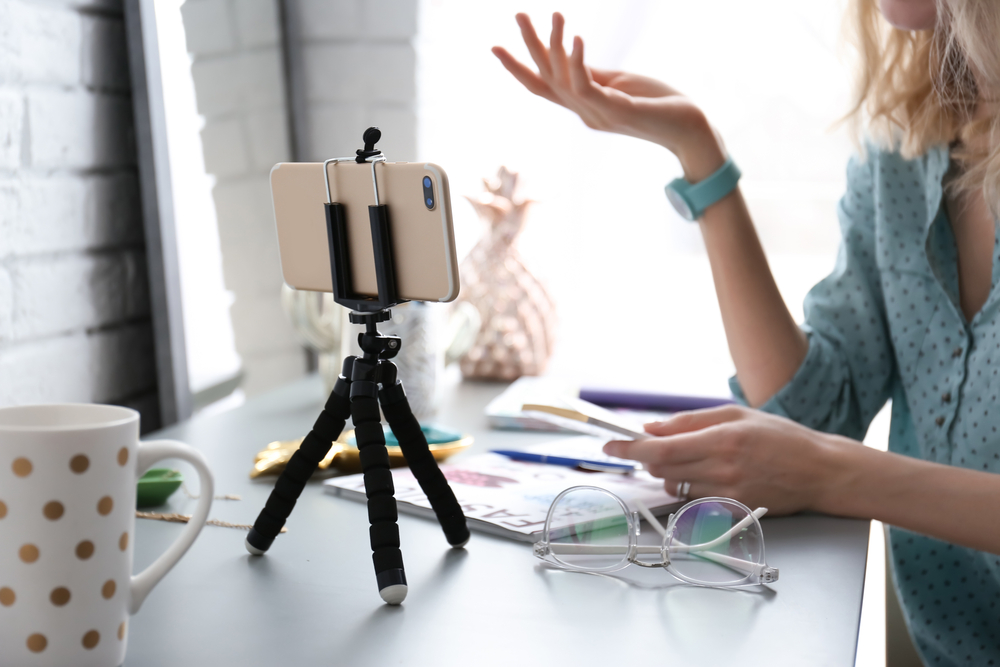The world is changing before our eyes, and this includes the way advisers are communicating with their clients and prospective clients. While much may eventually return to ‘normal’, some aspects of our daily narrative may have changed forever.
For those advisers who have yet to embrace the virtual world of client video communications, marketing expert, Jenny Pearse, shares some simple tips to help guide you along the path to your new normal……
Ready to join the video trend but not sure where to begin?
Prepare yourself for a new journey into creating video for your clients. We’ve outlined five simple steps on how to produce video as part of your content strategy. It’s time to begin!
Step 1: What’s the purpose of the video?
To get things underway, ask yourself – why are you creating this video and what is the message you want to convey.
Having a clear understanding of what you want to say keeps all elements of the video on track and sets a clear direction. When brainstorming your ideas for the video look at how it fits into your marketing strategy.
An important reminder: remain optimistic, enthusiastic and resourceful in the creative process. Some of the best video content can be produced from simple ideas, simple set-ups and simple messages.
In the video creation process, it may be that you end up with take after take after take, which begs the question of how long should the video be…
Step 2: Length of the video
The length of your video can depend on the nature of your message and where you’re publishing your video. Research the optimal video lengths according to media platforms that are part of your marketing strategy and use this as a guide.
Here are some ‘rules of thumb’:
- Shorter video is ideal on social media and long-form videos work better for websites – learning centres and video logs (vlogs).
- Facebook recommends videos around three minutes in length, Instagram posts can be up to one minute, but with IGTV you can now post a maximum 15-minute video from your smartphone or maximum 60 minutes from a desktop scheduling platform.
Step 3: Equipment you need
The three key equipment components you need working well for you are: audio, lighting and visual.
- Good sound is essential
Great audio will trump mediocre video. If the sound is clear and crisp, people are more likely to continue watching. Distorted audio will always drive people away. Invest in a good lapel microphone or other external microphone. Check out apps that you can also use on your smart phone.
- Get your lighting right
It’s optimal to have your light source in front of you near the camera, at a slight angle from you if possible. Consider some backlighting to give the video depth. The magic happens when people can easily see clear facial expressions and eyes to create a deeper connection with the audience.
- Creating the right visual
You have the option of recording on your smartphone or using a camera. There are high quality webcams which connect via USB to your computer if you’re wanting a more up close and personal frame. Composition is key to creating a great visual, look at how the main subject is framed and allow space around you for hand gestures and background.
When purchasing equipment consider budget, quality and utility to suit your video know-how. You can upgrade and add equipment as you become more experienced. Research your equipment and understand their finer details so it is not a distraction during the video process.
Step 4: Location, location, location
Be aware of the overall situation. What mood do you want to create? How you dress will depend on whether your video is an informal or formal communication. Your situation will have the same impact, so consider carefully what the camera can ‘see’ behind you. The presenter is the key focus – not the background! Your surroundings should enhance your video, not detract. So, plan ahead on where you will be shooting your video.
Step 5: Style!
The style of your video is dependent on you and the relationship you want to create with your audience. There are plenty of video styles to explore and you can try a few of them across different platforms and for different purposes. Research the style that suits your message, brand and strategy. Whether that’s a direct to camera approach, interview style, explainer video or even a live stream discussion.
Remember, consider who you want to target and who your audience is. Many social media platforms such as Facebook, YouTube, Instagram and others allow you to stream ‘live’ videos. These videos are published to your profile afterwards but can’t always be shared to other platforms. Will your next video be live!
The important thing with video is to create!
Get practical with video. You can expand to different styles and levels of simplicity and complexity as you go. The first step is to simply begin and enjoy the learning process of getting started with video. There is a whole world waiting for you to explore and an entire audience anticipating your first broadcast. Take these simple steps, keep it basic then build from a good foundation and you will be on your way to video success!

Jenny Pearse Managing Director of Jenesis, a business and marketing consultancy business.
Jenny has been helping financial services organisations, financial advisers, business owners and their teams to succeed and flourish in a rapidly changing landscape. With a keen focus on digital media and using technology as a platform to engage, Jenny has helped transform businesses all over Australia as they adapt and thrive in today’s world…







